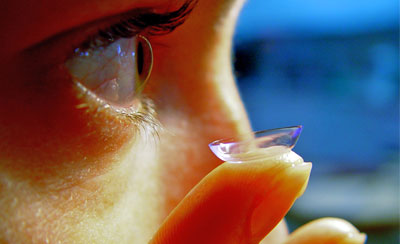Augmented Reality and Super Sight: The Bionic Contact Lens
But this incredible technology is not nearly as far-fetched as you might think. Bionic contact lenses made with tiny circuits and LEDs already exist! Using LEDs inside these lenses enables them to project images, text, and other information directly into the eye. These lens function much like other augmented reality technologies. The concept is the same, but its near-seamless integration to the eye could provide several key benefits.
One of these is the physical benefits. Those who have a visual impairment could wear them to increase their visual ability, providing them with alerts to curbs, stairs, uneven pavement, people, and objects that may be in the person’s peripheral vision. For some, it could even improve visual ability beyond 20/20!
At CES 2022, InWith Corporation previewed a smart contact lens that puts the user into augmented reality. InWith presently has a patented technology that will enable computer circuity to embed into a soft contact lens. This would allow a contact wearer to experience AR/VR technology.
Another benefit depends solely on how complex this bionic lens technology potentially becomes which will determine how it might find its use in virtual displays worldwide. Drivers and pilots could receive instantaneous information about their routes directly into their own eyes, including road conditions, weather alerts, and even GPS directions. Athletes would also be able to benefit from this technology by providing metrics on their performance, not on their wrist but rather view biometric data directly within their peripheral vision without having to look down. This technology could also potentially benefit the medical field by helping those who suffer from glaucoma, macular degeneration and those who have issues with their vision by increasing the level of contrast and edges to images.
Our dreams of super sight will be here sooner than we think! This technology has incredible potential and could truly transform how we see and experience the world around us. With these developments in technology comes the need to be able to measure and test with reliable and accurate instruments. Konica Minolta Sensing and Instrument Systems provide optical test solutions that mimic the human eye to assure the quality of virtual displays of AR/VR glasses. Konica Minolta Sensing’s CS-3000 Spectroradiometer has an additional specialized attachment that measures virtual images as it corresponds to pupil size and evaluates the levels of luminance, chromaticity, and visual spectrum of virtual images of AR/VR applications.











